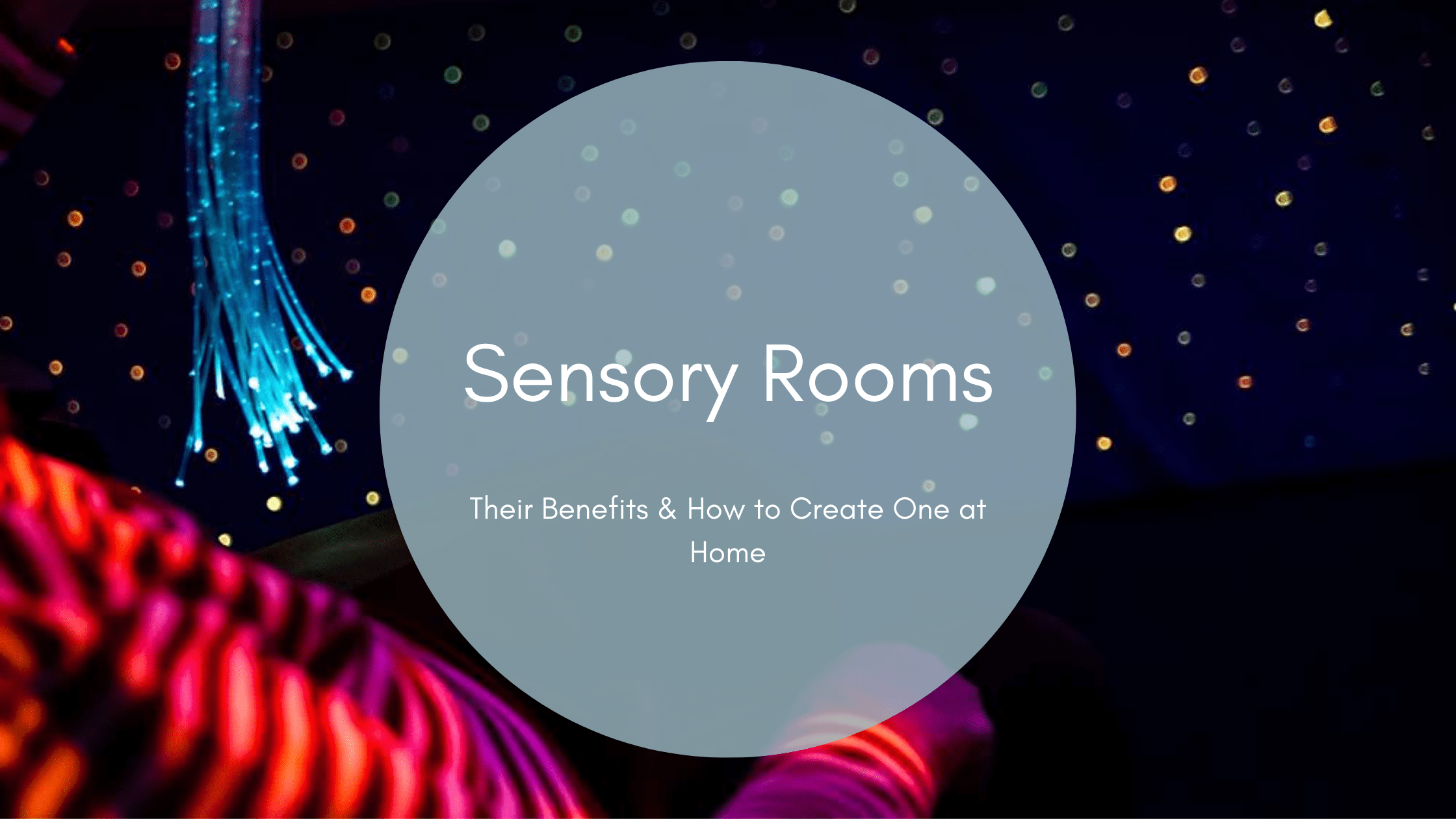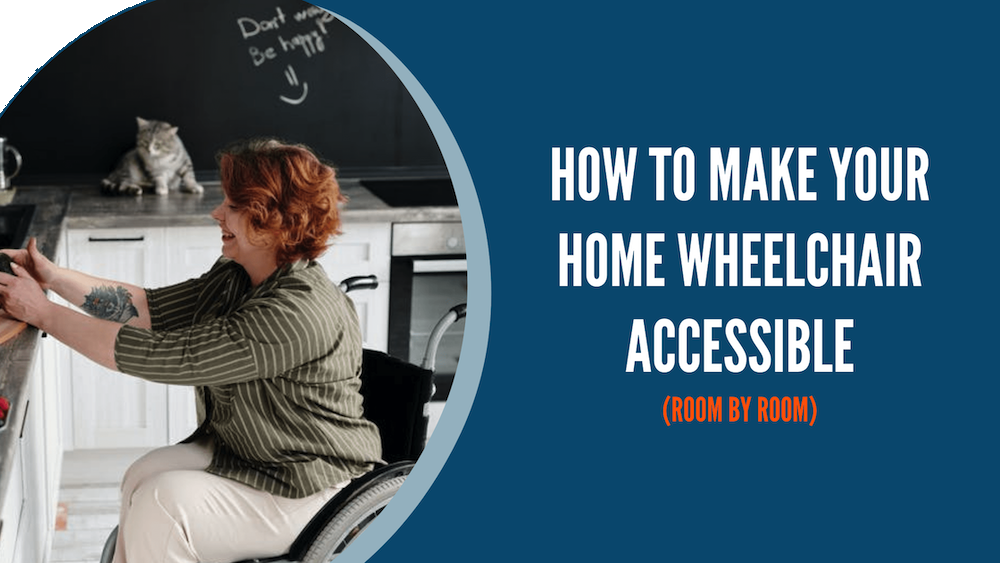
How to Create a Sensory Room at Home
Our nervous system is constantly receiving messages from the senses and turning them into responses. This is called sensory processing. For someone with a sensory processing disorder (SPD) such as autism, the brain doesn’t always react to stimuli in an expected way. The brain might overreact to sensory stimuli or it can not react enough. For autistic individuals, this might mean over-sensitivity to loud noises, bright lights or certain textures. Having a sensory processing disorder can be very distressing, and over-stimuli of senses can cause negative reactions such as fighting, shouting, hand-flapping and rocking.
For those who know somebody with a sensory processing disorder, it can be difficult to know how to support them. In particular, parents of children with an SPD face the challenge of assisting them in developing coping mechanisms to the stimuli that typically trigger any outbursts. One way that you can help a loved one with their SPD is to build a sensory room. In particular, sensory environments are great for children to work on their responses to sensory stimuli and develop effective coping mechanisms that they can use in their everyday lives.

What is a Sensory Room?
A sensory room is a space designed to help someone with sensory issues to develop their sensory abilities in a safe and low-stress environment. The aim of a sensory room is to deliver stimuli in a muted or soothing way. As well as autistic individuals, sensory rooms can also be great for individuals with cerebral palsy, ADHD and Down syndrome as well as elderly people with dementia. As well as sensory development, sensory rooms can be used to enhance feelings of comfort and wellbeing as well as alleviating stress and pain. They can help to develop communication and social skills as well as movement and balance.
The contents and design of a sensory room are usually done specifically to the needs of an individual because everyone’s needs are different. Sensory rooms provide a unique sensory experience through specific lights, sounds, colours or aromas. Each aspect of the room will be chosen to help an individual to deal with the specific stimuli that they struggle with.
Spending time in a sensory room can greatly help an individual learn to regular their brain’s negative reactions to external stimuli and also develop ways to cope with sensory experiences in their everyday lives. Sensory rooms are often found in homes, schools and even public spaces such as theme parks to provide those with special needs with a safe environment they can escape to when an environment becomes overwhelming.
In the real world, the brain might magnify small sensory stimuli to the point where it becomes very distressing for an individual. By being exposed to these stimuli in a toned-down way, individuals can become more accustomed to them in a way that helps the brain to respond in a less traumatic way. It’s important for SPD individuals to have space they can go to where they will feel safe and calm, especially in the event of a meltdown. When designed specifically for an SPD individual’s needs, a sensory space is a perfect quiet room to escape to when the stimuli of the outside world become overwhelming.

Benefits of Sensory Rooms
- Improves social development
- Improved focus
- Improve movement, balance and spatial orientation
- Calming environment
- Encourages learning through play
- Helps with colour recognition
- Encourages exploration

How to Create a Sensory Room
Having a sensory room in your own home is a great way to assist your child in their sensory development in the home, providing them with a safe space where they can explore and develop their senses. Designing and building a sensory room in your home can be a little overwhelming, especially if you haven’t done it before. A sensory room works best when designed to the sensory needs of an individual.

Deciding the Purpose of Your Sensory Room
The best sensory spaces are the ones that cater to the individual sensory needs of your child. Before designing the sensory space, try and think about what you want to achieve with the room. Does your child need a calming environment or a more interactive and stimulating one? Does your child need to work on their balance and movement? Do they need to work on their aversion to loud noises or certain textures? The sensory space can be what you need it to be. For some people, a sensory space is a room for when their child needs to calm down after being over-stimulated. For others, a sensory room is where they will spend time working on the child’s sensory development. Every individual is different, and the sensory room you create will reflect this. It’s quite rare that an individual with autism will struggle with just one area. You can cater to all their different needs however by creating a multi-sensory room with a range of sensory objects and items to target movement, learning, tactile experiences and calming down.

Choosing a Location for Your Sensory Room
A sensory room doesn’t have to be a large space. You can dedicate a whole room in your home to being a sensory space or just part of a room. Try and choose the quietest area of your house where you’re unlikely to be interrupted. One of the most important things in sensory room design is to create a calming space without external distractions that could ruin the atmosphere you’re trying to create. Ideally, your sensory room will have no windows, so that you can control the lighting artificially.



Advice for Decorating Your Sensory Room
Avoid clutter at all costs
Try and keep the room clear of clutter, as this can be over-stimulating for your child. Choose a few sensory objects for your child and leave these out in the room and store the rest in storage boxes or bins. Every few weeks swap out the items in your sensory room for different ones, as this will prevent your child from getting bored.
Keep things in reach
If you’re designing a space for a child or individual who uses a wheelchair, make sure you place items at a level that they can reach them. Everything in the room should be designed for their height so they feel like they can move and interact comfortably with the space.
Use items to create a specific mood
When choosing decorations, think about lighting, sound and objects that they can interact with that will contribute to the sort of atmosphere and environment you’re trying to create. Below, we have given you some ideas of which sensory equipment you can include in your sensory room to ensure it fulfils the purpose you need.
Use different lighting
Lighting is a great way to control the environment of your sensory room. When arranging the lighting for your sensory room, try and avoid using overhead lighting. Instead, use a variety of lamps with full-spectrum light bulbs. This will make it easier to adjust the lighting levels as needed. Also, try adding in a variety of light sources such as fairy lights or lava lamps. There are also a variety of sensory lighting kits available to you to help you create the atmosphere you’re trying to achieve.
Use different visuals
Think about the visuals you might include in your room. For a relaxing room, you might include a bubble tube or you might consider buying a projector to cast relaxing visuals. There are many different types you can opt for, that will cast different shapes across the room such as a galaxy star projector.
Incorporate sound
You can play soothing sounds or music in your sensory room to help with sensory development and creating a relaxing atmosphere. Sound can also be used to create an interactive experience through sensory objects and packages that synchronise lights and sounds.

Choosing Items for Your Sensory Room
Items for Calming Purposes
A calming room can be best for individuals who are very sensitive to sensory information. This will be a space where an individual with SPD can come if things get overwhelming. The room will contain soothing images, sounds and lighting to help create a calming effect.
Items for a calming sensory room:
- Sensory bubble tubes
- Wall mirrors
- Battery-powered candles
- Aromatherapy diffuser
- Sound pyramid
- Star projector
- Heavy blankets
- Fibre optic lights

Interactive items
An interactive sensory room is great for individuals who typically experience under-sensitivity. Often this can cause individuals to become withdrawn. A sensory room that includes interactive sensory products can help to bring an individual out of their shell and get them to engage with their surroundings more openly.
Items for an interactive sensory room:
- Interactive lights
- Musical touch wall
- Ball pit
- Projector and effect wheels
- Interactive wall panels

Items for Vestibular Stimulation
If your child has developmental disabilities, you can use your sensory space to help develop both gross motor skills and fine motor skills. You can also add sensory toys and equipment into your sensory room to encourage movement and help develop balance, flexibility, strength and hand-eye coordination.
Items for developing motor skills:
- Children’s hamster wheel
- Hanging swing or chair
- Inflatable ball chair
- Soft play equipment
- Bean bags
- Trampoline

Items to Enhance Learning
Sensory spaces can be excellent for helping individuals to retain information. Since a sensory room is designed to be a safe space with plenty of sensory stimulation, it’s likely your child will be more receptive to learning in this environment. There are various items and sensory toys you can include in your room to facilitate this and help your child to learn through play. Through exploring the space, individuals can also learn a range of cognitive skills including cause and effect.
Items to facilitate learning:
- Puzzles
- Touch & match board

Items for Tactile Experiences
To help an individual develop their tactile senses, you might want to add in some items that have a specific texture or surface.
Items for tactile senses:
- Sensory spine balls
- Soft toys
- A sensory wall of different textures

Sources: enablingdevices.com, alzheimersweekly.com, spdstar,org





